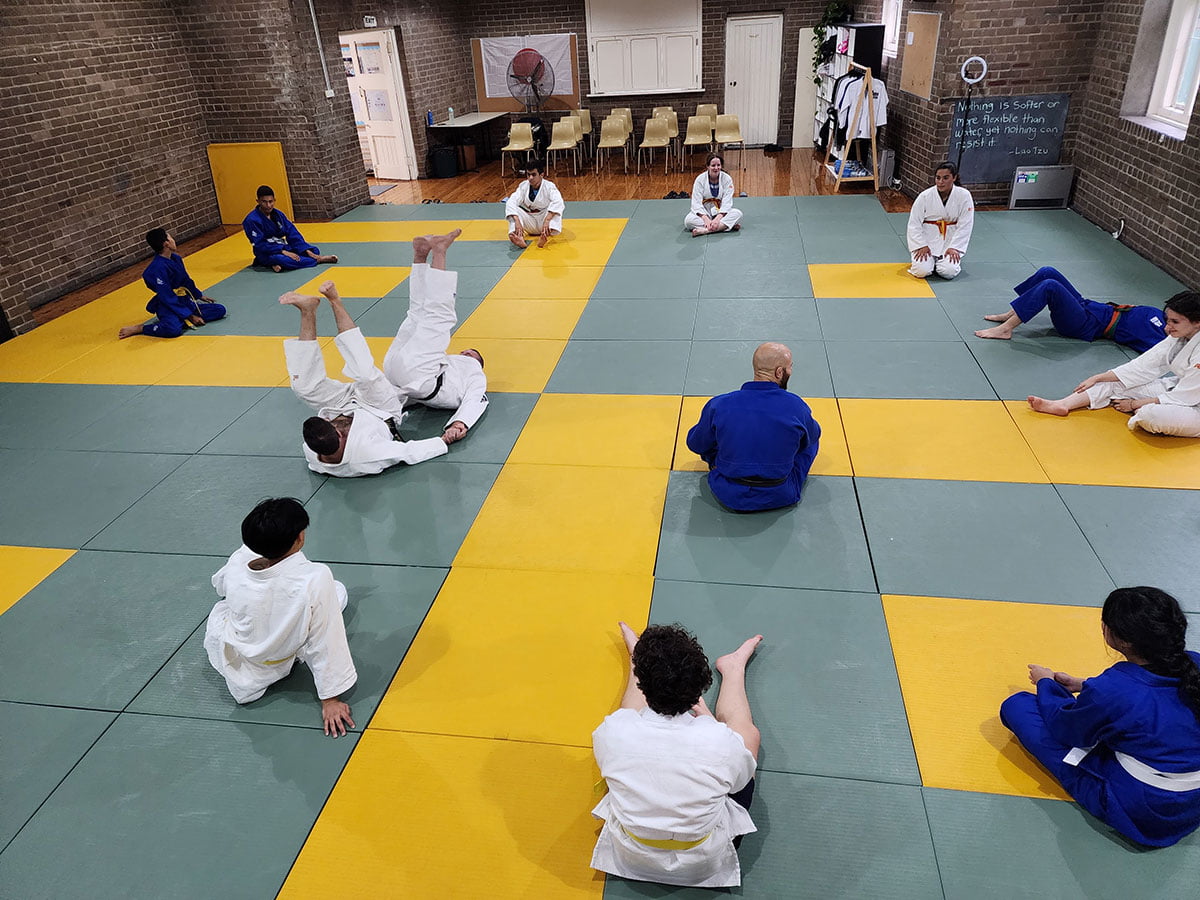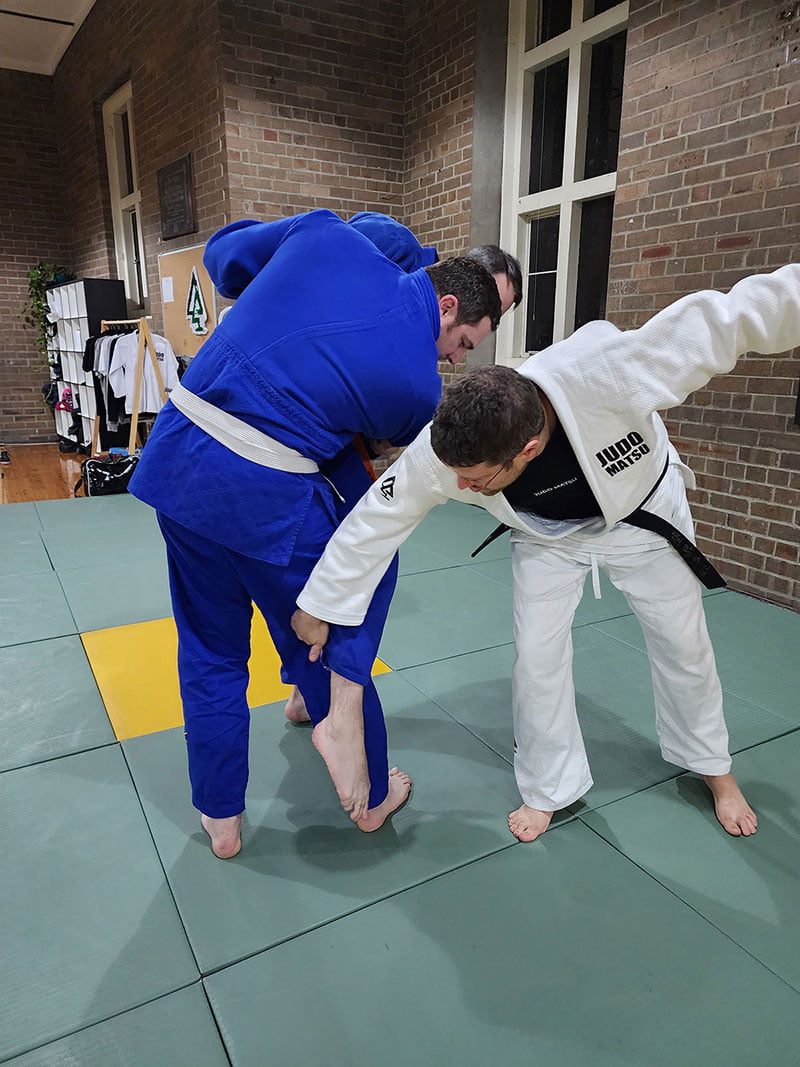The goal of the Warm Up is to engage both the body and mind. This will usually include methods of safe rolling and tumbling, gymnastics, and “animal flow” movement patterns.
Each skill is chosen to connect the brain with the body through intentional physical coordination, and has multiple benefits:
In combination, these will have the ability to enhance each student’s speed of progression while learning judo, and build a mind/body connection that is transferable to everyday life.

The Technical Conditioning phase allows students to learn judo techniques. These consist of throws or ground fighting techniques, where the student is introduced to the basic elements of the technique, and learns progressions to advanced variations based on personal skill/comfort level.
I also provide individualised adaptations of techniques, based on that student’s previous skills/sports experience, body type and preference. Teaching in this way allows me to emphasise good technique that is performed correctly and safely.
Here is a basic example of the Technical Conditioning process:
In teaching a basic throw, I will demonstrate the throw. I will then break down the key points (steps, points of balance, pulling direction etc.) to perform the throw.
Students will practice this technique in a closed/controlled environment, and I will provide feedback and adjustments as necessary.
Once the student is able to perform the throw in this controlled environment, I begin to introduce ‘dynamic’ or ‘open environment’ details. This could include alternative entries, practicing the throw with different movement patterns, introducing different combination variations or integrating controlled resistance from the opponent. Monitoring and feedback continues throughout.
This process works together to reinforce the throwing principles, and aims to provide the basic structures which will translate into the Practice Sparring phase.

Within the Randori phase, individual techniques become “building blocks” that can be connected into a personal fighting style. During this phase, each student will have the opportunity to experiment in connecting these techniques in a manner which allows them to be reassured of their safety whilst practicing judo.
Judo is a martial art at its core, and as a coach, I view each student’s progress in building their individualised style to be a creative endeavour. My goal is to support their personal approach to learning; applying and experimenting with judo in the manner which best suits them.
Eventually this becomes a “game plan” that a student can continue to build and apply as they desire, whether to competitive settings, fitness goals, or to refine as their own artform.

